| |
|
|
|
|
|
|
|
|
|
|
| |
| |
 |
|
| |
田润德
编译文/图 2020-09-18
20:36 |
|
| |
|
|
|
|
| |
 |
|
|
|
| |
斋藤秀雄(Saito,Hideo 1902-1974) |
|
|
|
| |
|
|
| |
斋藤纪念管弦乐团在小泽征尔松本音乐节演出音乐会 2019
Saito Kinen Orchestra/Diego Matheuz2019 |
|
|
|
| |
迭戈·马修斯,指挥
曲目安排
西尔维斯特Revueltas: Sensemaya
莫扎特:D大调第35交响曲,K. 385《哈夫纳》
柴可夫斯基:B小调第六交响曲,作品74《悲怆》
柴可夫斯基:波兰舞曲,摘自《尤金·奥涅金》
Diego Matheuz, conductor
Program
Silvestre Revueltas: Sensemayá
Mozart: Symphony No. 35 in D major, K. 385 “Haffner”
Tchaikovsky: Symphony No. 6 in B minor, Op. 74 “Pathétique”
Tchaikovsky: Polonaise , from ' Eugene Onegin ' |
|
|
|
| |
1992年,世界知名的斋藤纪念乐团和指挥家小泽征尔在松本市推出了松本音乐节。每年7月中旬到8月初,世界著名的指挥家小泽征尔领衔的斋藤纪念乐团,不仅参加歌剧及管弦乐的演奏,还为年轻一代开音乐研究会。以音乐节来纪念为日本音乐界作杰出贡献的,桶朋学园的创始人,已故斋藤秀雄先生的功绩。
2015年开始,名称变更为“小泽征尔 松本音乐节'' (Seiji Ozawa Matsumoto Festival)
Saito Kinen Orchestra 斋藤纪念管弦乐团 |
|
|
|
| |
|
|
|
|
| |
音乐历史上的今天
1974年9月18日《日本指挥家、大提琴家、教育家:斋藤秀雄(Saito,Hideo)逝世。
斋藤秀雄(Saito,Hideo 1902-1974),日本的西洋音乐教学之父,同时也是日本的指挥教父。斋藤秀雄是日本有名英语学者斋藤秀三郎的次子,12岁时就显现了对音乐的兴趣,开始演奏洋琵琶;16岁时开始学习大提琴,之后进入上智大学,但由于想专心于音乐而中途退学。斋藤秀雄22岁时随日本当时有名的作曲家、指挥家近卫秀麿留学德国。归国后,斋藤秀雄在日本新交响乐团(NHK交响乐团的前身)担任大提琴演奏和乐团指挥。1930年,斋藤秀雄留学柏林,成为大提琴家费尔曼(E.Feuermann)
的得意弟子;这对斋藤秀雄的演奏生涯产生了极大影响,对演奏或指挥德国作曲家的作品有相当大的偏好。
他不但是大提琴家、指挥家,也是日本杰出的音乐教育家,创办桐城学园音乐系,着眼于音乐训练是须从幼年即开始的音乐扎根教育;他有着很多训练学生的独特方法,其中包括巴黎音乐学院所实行的“视唱”(Solfege)
训练方式。战后,斋藤秀雄与井口基成、伊藤武雄、吉田秀和等人成立“为孩子开设的音乐教室”,与以后桐朋学园一系列音乐学科的开设有很大关系。此后,斋藤任教桐朋女子高校、桐朋学园大学、桐朋学园短期大学等,将毕生精力献给了音乐教育事业。1964年,斋藤成立桐朋学园弦乐合奏团,并成功进行美国公演;并于1967年出任日本指挥者协会会长。1974年9月18日,斋藤秀雄因癌症去世。
今日视频:1、斋藤纪念管弦乐团在小泽征尔松本音乐节演出音乐会
(2019
);2、齋藤秀雄改编巴赫恰空管弦乐版 - 小泽征尔指挥。
|
|
|
|
| |
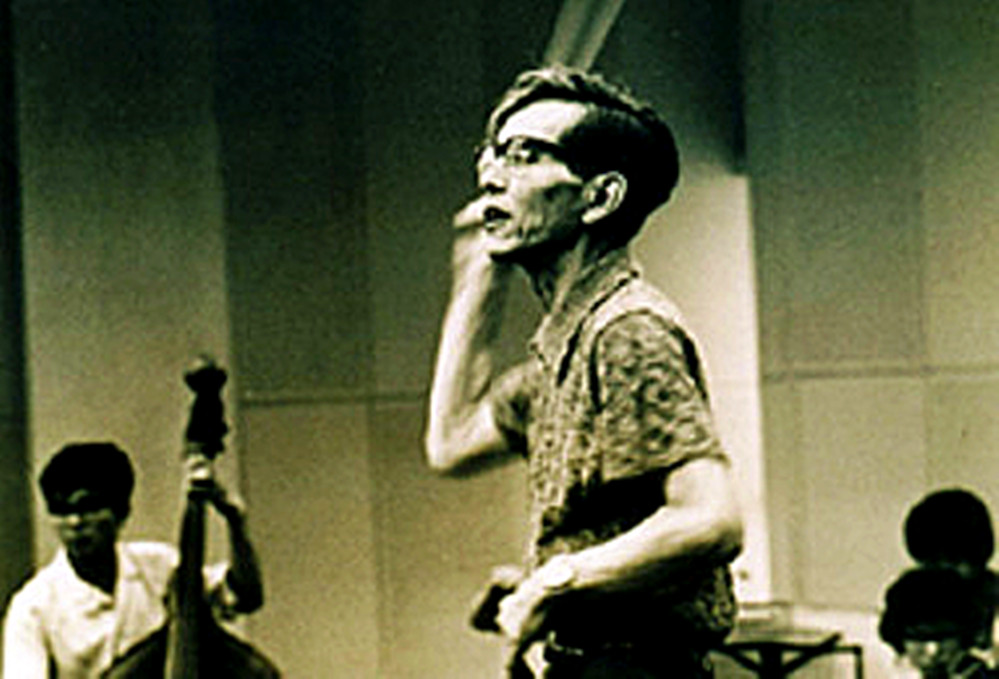 |
|
| |
斋藤秀雄(Saito,Hideo )在指挥中 |
|
|
|
| |
斋藤秀雄是20世纪日本杰出的音乐教育家,早年曾赴德学习西方音乐,归国后在日本新交响乐团等担任大提琴演奏和乐团指挥,后创办桐城学园音乐系,将毕生经历奉献给音乐教育事业。
斋藤先生一生中培养了许许多多的优秀音乐家,他用热情和智慧影响了一代人!小泽征尔就是他的学生之一。小泽先生在1951年考入桐城学园,跟随斋藤秀雄学习指挥。斋藤独特的训练方法,给小泽征尔打下了牢固的指挥专业基础,而斋藤对音乐的热情和执着,也使小泽征尔受益终身。
斋藤秀雄生前曾对学生说过:“我的梦想就是,你们长大成材之后,能够组建成一个优秀的交响乐团。”1984年,为纪念恩师斋藤秀雄逝世10周年,在小泽征尔的号召下,斋藤秀雄遍布日本和欧美各地的学生们临时集结在一起,组成乐团为恩师举办了纪念音乐会,随后于1987年正式以“斋藤纪念乐团”的名义,开始了第一次欧洲五站巡演(维也纳、柏林、伦敦、巴黎、法兰克福),载誉而归。
这是一个伟大音乐家的作为,同时也是一个普通的音乐教育者的本应作为。 |
|
|
|
| |
“小泽征尔 松本音乐节'' (Seiji Ozawa
Matsumoto Festival) |
|
|
|
| |
1992年,世界知名的斋藤纪念乐团和指挥家小泽征尔在松本市推出了松本音乐节。每年7月中旬到8月初,世界著名的指挥家小泽征尔领衔的斋藤纪念乐团,不仅参加歌剧及管弦乐的演奏,还为年轻一代开音乐研究会。以音乐节来纪念为日本音乐界作杰出贡献的,桶朋学园的创始人,已故斋藤秀雄先生的功绩。
2015年开始,名称变更为“小泽征尔 松本音乐节'' (Seiji Ozawa Matsumoto Festival) |
|
|
|
| |
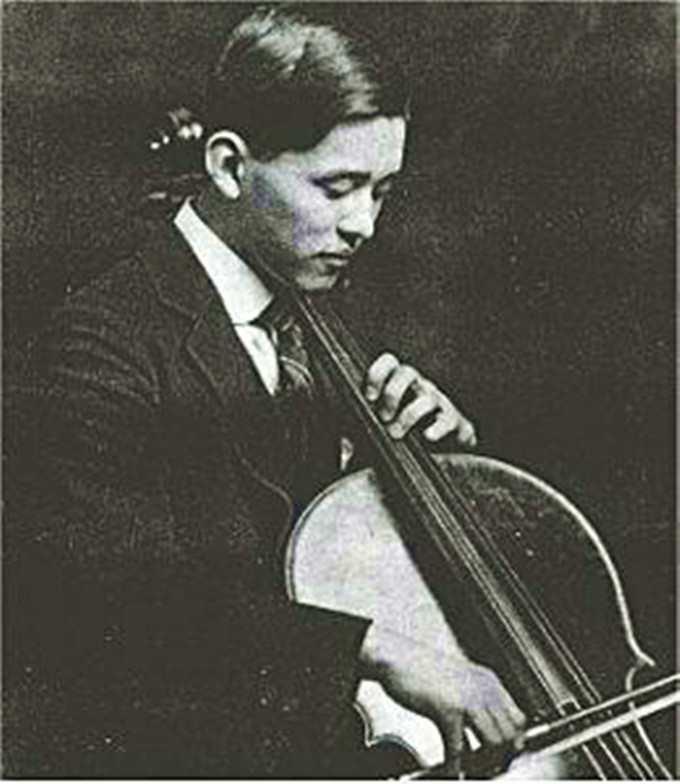 |
|
| |
斋藤秀雄(Saito,Hideo) |
|
|
|
| |
松本音乐节由小泽征尔先生于1992年创办,以此纪念他已故的良师益友斋藤秀雄
(Hideo Saito),并向世人证明斋藤教授至今仍对古典音乐有着巨大的影响力。该音乐节因斋藤纪念乐团 (Saito Kinen
Orchestra) 的成功而发展起来。
|
|
|
|
| |
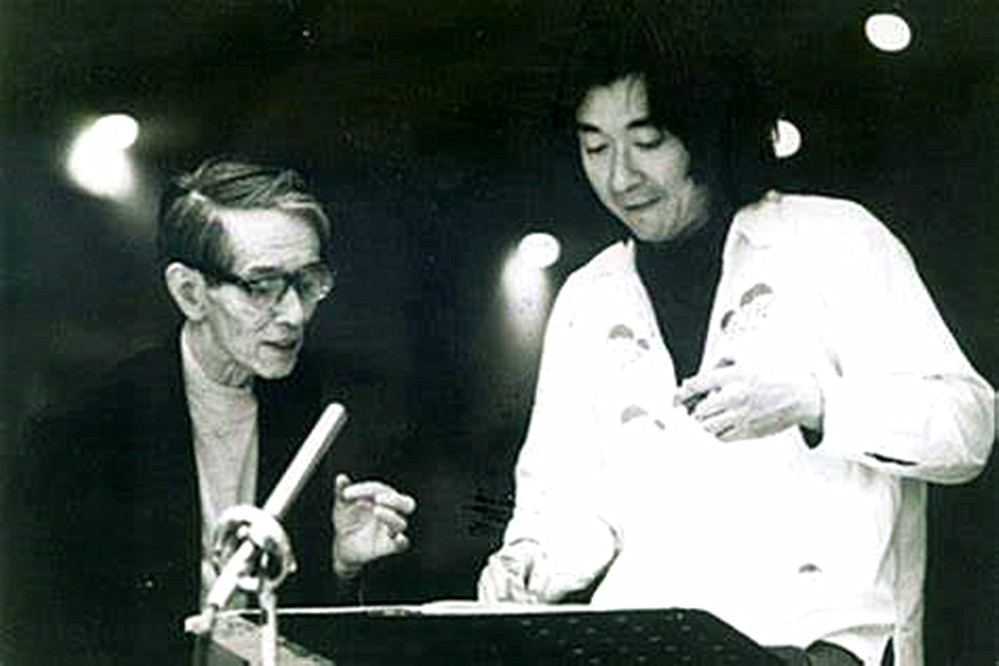 |
|
| |
斋藤秀雄(Saito,Hideo)
和小泽征尔 |
|
|
|
| |
Introduction to
Saito Hideo's "Tutorial on Conducting" |
|
|
|
| |
In modern Japanese
conducting teaching, there are various kinds of textbooks, and the
Conducting Method Course written by his wife Hideo Saito occupies a
special position. Mr. Saito is a famous music educator and performer,
who is respected by people in Japan.
Hideo Saito was born in The 35th year of the Meiji period in Japan. His
father was a well-known English scholar who wrote the Japanese English
dictionary. Hideo Saito graduated from the Economics department of
Sophia University in his early years.Due to his interest in music, he
began to practice cello automatically and later went to Germany to
study.After returning home, he joined the New Japan Symphony Orchestra
(the predecessor of the current NNK Symphony Orchestra) as a
cellist.That is the level of Music in Japan, "below the standard," as
Seiji Ozawa puts it.Faced with this situation, Mr. Saito and other wise
men, determined to educate, set up several specialized music classrooms,
including piano and cello, which later developed into schools covering a
variety of music disciplines.Under saito's strict academic policy, the
university has produced a large number of talents, attracted more and
more attention, increased the number of students and expanded the
university from strength to strength, until it has developed into
today's Tongpeng Gakuen University, which enjoys a good reputation in
music education.
As a member of the orchestra, Saito has carefully observed the different
conductors and techniques, and has first-hand experience of conducting
gestures and the psychological effects of the performers.The
above-mentioned ii is some of the most intimate gestures of a conductor,
which prompted him to begin an in-depth study of the command technique,
and there were few books on the command method at that time.Some
European conductors thought that conducting could not be taught.The
basic motivation for Saito's book is how to make this emerging
technology widely known and learned.Based on many years of teaching
accumulation, combining a large number of student notes, and with the
help of the enthusiasm of many students, a textbook of conducting law
was produced.Later, it was modified by some students who became
excellent conductors according to their practical experience and formed
the current Course of Conducting Law.
The Tutorial is divided into two parts: the basic part and the
application exercise.
In the "basic part", the author expounds his own views on various issues
of command, and analyzes the theory of command gesture movement
theoretically.In particular, He has a unique view on the classification,
contact movement, direct movement and application diagram of command
technology.According to Saito, the whole principle of directing gesture
movement consists of the process of acceleration and deceleration, which
forms the pre-point preparation, point and post-point movement through
acceleration and deceleration.Since this principle is in keeping with
the rhythm of people's inner senses, people can sense speed and rhythm
from it, and command gestures have evolved other techniques based on it.
Mr Saito's teaching is guided by the principle of using the hand instead
of the mouth, and of using technology to get the orchestra to produce
music that suits him.The techniques of conducting are discussed in
detail, and the techniques are given names according to people's natural
feelings.For example, Saito divided command technology into indirect
motion and direct motion. Indirect motion includes: hitting, average
motion, acceleration and deceleration in arc motion;Direct movement
includes: instantaneous movement, first in method, pull up, lead to
hang.Different techniques indicate different musical effects.The
exposition of these techniques not only makes the technique of
commanding theoretically, but also makes the reader have a clearer
understanding of the technique of commanding conceptually.By mastering
and using these skills, the conductor can give clear instructions to the
players according to the changes of the music and his own handling, thus
better controlling the whole orchestra and greatly increasing the
expressive power of his hands on the music.In order to master these
techniques, the author not only discusses these techniques, but also
puts forward effective practice methods, especially in how to use
muscles to make the arm relax and freely complete these technical
movements has great practical value.Through years of teaching practice,
Mr. Saito has selected 8 pieces of music to guide the "applied practice"
section step by step and beat by beat.The eight songs are short, but
including several different types (such as: GeChangXing, bouncing,
extremely slow, waltz, etc.), require the use of the "basic" skills to
command, to achieve through intensive training, mastering their purpose,
tracks by beginning to use a single technique to direct simple music
gradually deepen to the integrated use of various methods of music
command is relatively complex, rich change.It will take about a year to
conduct the eight pieces of music according to the book's requirements.
There are a lot of teachers who conduct instruction in Tongpeng
University. They use different methods and procedures to conduct
instruction according to their own viewpoints and the situation of
students.But in its early stages it was largely based on Mr Saito's
"Tutorial in Conducting".Through the training of the course and under
the guidance of Mr. Saito, Toeppon produced a group of outstanding
conductors with international influence, such as Seiji Ozawa, Hiroyuki
Yeoncheng, Akiyama and Kei kei.As the statue of Hideo Saito, given by
his students to The University in memory of Mr. Saito, says: "As the
founder of The University, Hideo Saito opened a new era in the history
of Japanese music through rigorous and orthodox education, the fruits of
which are now being known to the world."
There are other views on the evaluation of the Conducting Course, mainly
the view that it is not necessary for conductors to be taught as written
in the Course.But as a textbook, his scientific and systematic nature is
widely accepted.
With the rapid development of music education in China and considerable
achievements made today, it is necessary to know and study more typical
educational viewpoints and methods in the world.
|
|
|
|
| |
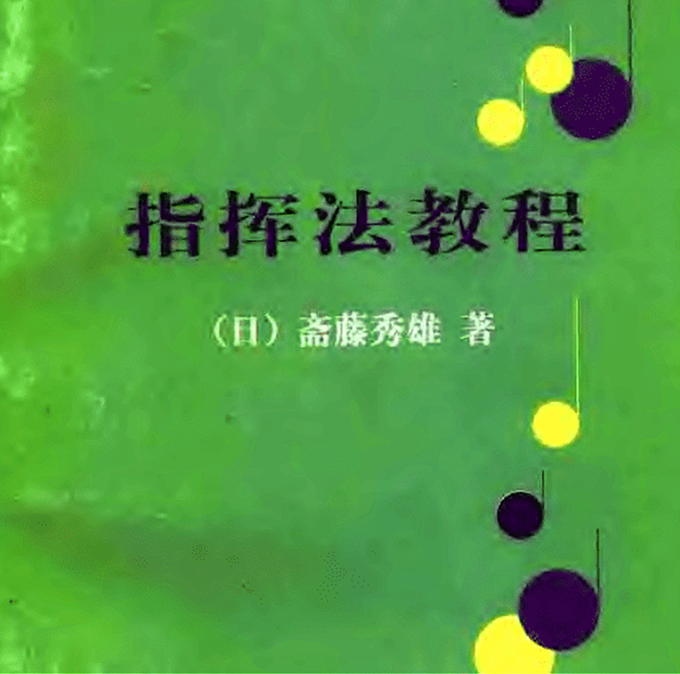 |
|
|
|
| |
斋藤秀雄(Saito,Hideo)的指挥法教程 |
|
|
|
| |
斋藤秀雄《指挥法教程》简介 |
|
|
|
| |
在日本现代指挥教学中,各类教科书繁多,妻子斋藤秀雄所著《指挥法教程》占有特殊的地位,斋藤先生是位著名的音乐教育家、演奏家、在日本国内受着人们的尊敬。
斋藤秀雄生于日本明治35年,父亲是编著日本英语辞典的著名英语学者,斋藤秀雄早年毕业于上智大学经济学科。由于对音乐的兴趣自动开始练习大提琴,后来赴德国留学。归国后以大提琴演奏者的身份进入日本新交响乐团(现在的NNK交响乐团前身)。那是日本的的音乐水平,案小泽征尔所说“还在标准以下”。面对这种现状,斋藤先生和一些有识之士,立志于教育,创办了有钢琴、大提琴等几种专业音乐教室,后来发展成包括各种音乐学科的学校。在斋藤严谨的治学方针下,学校人才辈出,成绩日趋瞩目,学生不断增加,学校不断壮大,直至发展成为今天的在音乐教育方而享有声誉的桐朋学园大学。
斋藤在乐队中担任演奏员时,对不同的指挥家及技术进行过细心观察,对指挥手势及演奏员的心理作用有着切身体验。特刖是一些指挥家家消楚的手势给他的深划印像,促使他开始了对指挥技术的深入研究、当时关于指挥法的敬科书很少。有些欧洲的指挥家认为指挥是不能教的。如何使更多的人了解和学会这门新兴的专门技术便成为斋藤著书的基本动机。基于多年的教学积累,综合了大量的学生笔记,并在许多学生的热情帮助下,一本指挥法教科书产生了。后来又经一些成为优秀指挥家的学生们根据实践经验的不断修改,形成了现在的《指挥法教程》。
《指挥法教程》分为“基础篇”“应用练习”两大部分。
在“基础篇”中,作者阐述了自己关于指挥的各种问题的观点,从理论上对指挥手势运动的原理进行了剖析;特别是住对指挥技术的分类、问接运动、直接运动、运用图解等方面有着独特的见解。斋藤先生认为:整个指挥手势运动的原理是包括加速度和减速度的运动过程,通过加速和减速形成点前预备,点和点后运动。由于这一原理符合人们内心感觉的律动,才使人们可以从中感觉出速度和节奏,指挥手势也以此为基础演变出其他的技术来。
斋藤先生的教学中始终贯彻着如何用手代替嘴,通过技术手段驱使乐队奏出与自己内心相符合的音乐这一原则。在书中对指挥的技术进行了细致的论述,对各种技巧根据人们的自然感受起了相应的名词。比如斋藤将指挥技术分为间接运动和直接运动两大类,间接运动包括:打、平均运动、弧线运动中带加速减速;直接运动包括:瞬间运动、先入法、上拔、引挂。不同技巧指示出不同的音乐效果。通过对这些技巧的论述,不仅使指挥的技术理论化,也使读者从概念上对指挥的技巧能有更为清醒的认识。掌握和运用这些技巧,指挥者可以根据音乐的变化和自己的处理给演奏员以明确的指示,较好地控制整个乐队,同时也大大增加了自己的手对音乐的表现力。为了是读者掌握这些技术,作者在论述这些技巧的同时,还提出了有效的练习方法,特别是在如何运用肌肉能使手臂放松、自如地完成这些技术动作方面有着较大的实用价值。斋藤先生通过多年的教学实践,精选出了8首乐曲在“应用练习”部分中逐节逐拍地进行指导。这8首乐曲都短小,但包括几种不同的类型(如:歌唱性的,跳跃的,极缓慢的,圆舞曲等),要求采用“基础篇”中论述的技巧来指挥,以达到通过集中练习,掌握它们的目的,曲目由开始用较为单一的手法来指挥简单的音乐逐步加深到综合
运用各种不同手法指挥较复杂、富有变化的音乐。按照书上的要求指挥完这8首乐曲约需要一年的时间。
在桐朋大学指挥任课的教师很多,他们根据自己的观点和学生的情况,用不同的方法和程序进行指挥教学。但在最初阶段大都是以斋藤先生的《指挥法教程》作为
基础的。通过《教程》的训练并在斋藤先生的指导下,桐朋产生了象小泽征尔、延城宏之、秋山和庆等一批具有国际影响的优秀的指挥家。正象他的学生们为了纪念斋藤先生,集体送给桐朋学园大学的斋藤秀雄的塑像上写的那样:“斋藤秀雄作为桐朋学园大学的创始人,通过严格正统的教育,开辟了日本音乐历史的新时代,其成果正被世界所知道。”
对于《指挥法教程》的 评价也有其它
观点,主要是认为指挥没有必要象《教程》中写的那样去教。但作为一部教科书,他的科学性、系统性还是受到普遍的承人的。
在我国音乐教育水平飞速发展并取得相当成就的今天,更多地了解和研究世界上较为典型的教育观点及其方法还是有必要的。 |
|
|
|
| |
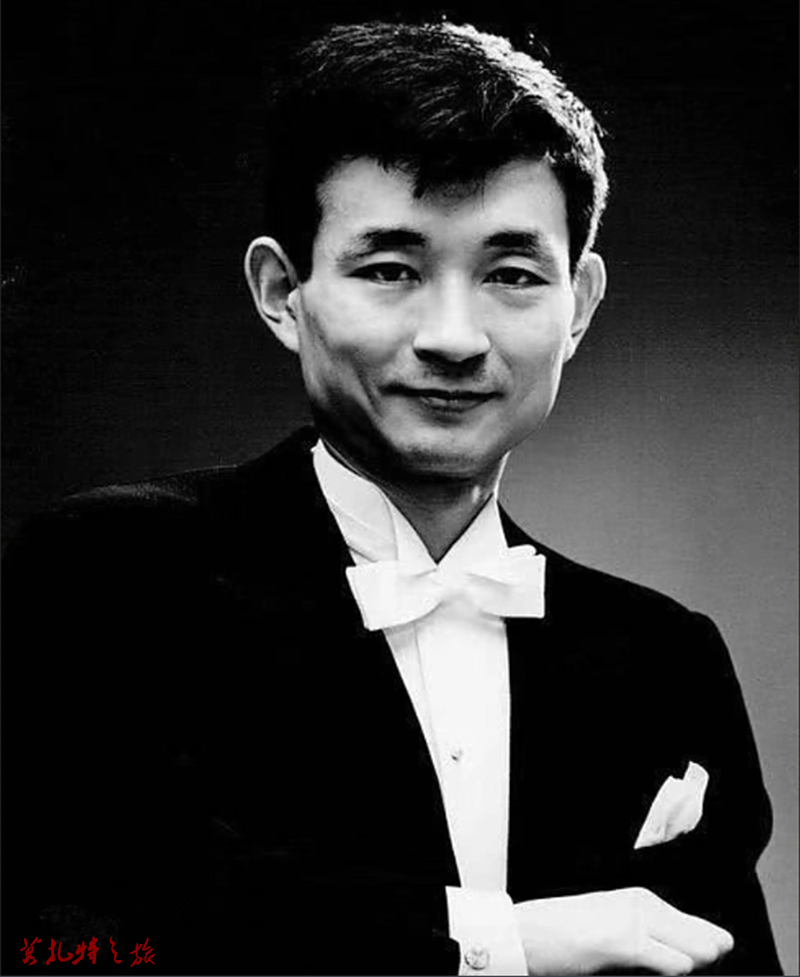 |
|
|
|
| |
小泽征尔(1935年9月1日-2024年2月6日), 出生于中国沈阳,日本男指挥家。
1951年,考入东京桐朋学园,随斋藤秀雄学习指挥。1959年,获法国贝桑松国际指挥比赛冠军。1960年,在卡拉扬主持的国际比赛中获第一名。1961年,担任纽约爱乐乐团副指挥;同年,与纽约爱乐交响乐团合作,首次在卡内基音乐厅登台指挥。1962年,担任日本广播交响乐团指挥。1963年至1964年,担任列维松管弦乐团指挥 。1965年起,担任加拿大多伦多交响乐团音乐指导与常任指挥。1970年,担任美国旧金山交响乐团的音乐指导与常任指挥。1976年12月,对中国北京、上海进行了为期一周的访问 。1978年,在中国北京首次与中国中央乐团交响乐团合作演出 。1979年,带领波士顿交响乐团到中国上海、北京进行访问演出。2000年,创立小泽征尔音乐塾 。2002年,担任维也纳新年音乐会指挥 。2004年,带领维也纳爱乐乐团在人民大会堂举行音乐会 。2005年10月,带领“小泽征尔音乐塾”进行中国巡演 。2007年,指挥维也纳国家歌剧院交响乐团在中国上海。2010年患食道癌;同年12月,在美国纽约卡内基音乐厅内指挥斋藤纪念管弦乐团演出,食道癌手术后的首场演出 。2015年,获肯尼迪中心荣誉大奖 。2016年,获格莱美奖 ;同年,与指挥家祖斌·梅塔合作指挥维也纳爱乐乐团演出。
2024年2月6日,日本指挥家小泽征尔因心力衰竭在家中去世,享年88岁。 |
|
|
|
| |
Shizuo Shiozaki
(September 1, 1935 - February 6, 2024) was born in Shenyang, China. He
was a Japanese conductor. In 1951, he entered Tokyo Tōbō Gakuen and
studied conducting under Shizuto Shūzō. In 1959, he won the championship
of the International Conducting Competition in Besançon, France. In
1960, he ranked first in the international competition conducted by
Karajan. In 1961, he served as the deputy conductor of the New York
Philharmonic Orchestra; in the same year, he collaborated with the New
York Philharmonic Symphony Orchestra and made his debut as a conductor
at Carnegie Hall. In 1962, he became the conductor of the Japan
Broadcasting Symphony Orchestra. From 1963 to 1964, he served as the
conductor of the Levison Orchestra. Since 1965, he has served as the
music director and regular conductor of the Toronto Symphony Orchestra
in Canada. In 1970, he served as the music director and regular
conductor of the San Francisco Symphony Orchestra in the United States.
In December 1976, he visited Beijing and Shanghai in China for a
one-week tour. In 1978, he collaborated with the China Central Orchestra
Symphony Orchestra for the first time. In 1979, he led the Boston
Symphony Orchestra on a visit and performance tour to Shanghai and
Beijing in China. In 2000, he founded the Ichikariji Music School. In
2002, he served as the conductor of the New Year Concert of Vienna. In
2004, he led the Vienna Philharmonic Orchestra to give a concert at the
Great Hall of the People. In October 2005, he led the "Ichikariji Music
School" on a tour of China. In 2007, he conducted the Vienna State Opera
Symphony Orchestra in Shanghai, China. In 2010, he was diagnosed with
esophageal cancer; in December of the same year, he conducted the
Shizuto Memorial Orchestra in Carnegie Hall, New York, USA, for the
first performance after his esophageal cancer surgery. In 2015, he
received the Kennedy Center Honors Award. In 2016, he won the Grammy
Award; in the same year, he collaborated with the conductor Zubin Mehta
to conduct the Vienna Philharmonic Orchestra. On February 6, 2024,
Japanese conductor Ichikariji Shizuto passed away at home due to heart
failure at the age of 88. |
|
|
|
| |
 |
|
|
|
| |
迭戈·马特乌兹 委内瑞拉的指挥家 |
|
|
|
| |
迭戈·马特乌斯(Diego Matheuz)是委内瑞拉交响乐团(El
Sistema)中最杰出的人物之一,在交响乐和歌剧剧目方面,他已成为国际舞台上的重要人物。他曾任委内瑞拉Simón
Bolívar交响乐团首席指挥,在欧洲、亚洲、美洲和澳大利亚建立了一个充满活力的职业生涯。他曾担任重要的领导职务,包括威尼斯凤凰剧院的首席指挥,博洛尼亚莫扎特乐团的首席客座指挥(应克劳迪奥·阿巴多的邀请)和墨尔本交响乐团。自2022年以来,他一直担任东京小泽征尔音乐学院管弦乐团的首席指挥,这一角色源于他与这位传奇的日本大师的密切合作。他还在亚洲巡回演出,并与斋藤基宁管弦乐团在松本音乐节上演出。
在2023-2024演出季,马特乌斯在维也纳国家歌剧院和纽约大都会歌剧院以比才的新作《卡门》首次亮相,受到高度好评。他还在智利国家歌剧院担任指挥,并于2025年1月回到维也纳,获得了进一步的赞誉。2024-2025演出季标志着他作为歌剧指挥的全面确立,他将重返凤凰剧院(茶花女)、维也纳国家歌剧院和巴黎歌剧院(伊尔巴比埃尔迪西维利亚),并在巴塞罗那大剧院上演新作品《爱的爱情》。在意大利,他将与唐·卡洛一起在巴里的佩特鲁泽利剧院演出,与卡米娜·布拉纳一起在罗马歌剧院演出,并将携《茶花女》回到日本。
在交响乐领域,他将于2025年10月在纽约爱乐乐团的三场订阅音乐会中首次亮相。他的歌剧生涯为他带来了柏林德意志歌剧院和国家歌剧院、瓦伦西亚艺术宫、维也纳剧院、里斯本<s:1>卡洛斯剧院、佛罗伦萨音乐剧院、都灵地区剧院、维罗纳竞技场和佩萨罗罗西尼歌剧节等舞台。他最近最著名的作品有Bartók的《蓝胡子的城堡》和《理发师的桥牌》(《凤凰城》)、《阿伊达》(维罗纳竞技场)、伯恩斯坦的《弥撒》(罗马,达米亚诺·米基莱托导演)、与胡安·迭戈合作的《伯爵》Flórez(佩萨罗音乐节,RAI播出)和巴黎歌剧院的《塞拉内托拉》。
在交响曲目中,他指挥了两场国际大型音乐会,包括凤凰歌剧院的两场全球广播的新年音乐会,与柏林交响乐团和安娜·涅特雷布科、奥尔加·佩列捷亚特科、菲利普·雅鲁斯基等独奏家合作的ECHO古典音乐会,以及在东京三tory音乐厅举行的德国留声机120周年庆典,该音乐会已作为官方专辑发行。他曾指挥过圣塞西莉亚国家学院乐团、斯卡拉爱乐乐团、马勒室内乐团、法国广播爱乐乐团、巴黎室内乐团、西班牙国家乐团、BBC爱乐乐团、爱乐乐团、皇家爱乐乐团、皇家利物浦爱乐乐团、博鲁桑伊斯坦布尔爱乐乐团、以色列爱乐乐团、洛杉矶爱乐乐团和温哥华交响乐团等一流乐团。
马特乌斯致力于教育事业,忠于他在El Sistema的根基,与委内瑞拉的青年管弦乐团进行了广泛的合作,包括Simón
Bolívar管弦乐团,他曾与该乐团进行过国际巡演。自2019年以来,他与小提琴家弗朗西斯科·塞内塞(Francesco
Senese)共同领导了MACH,这是一项教育倡议,是意大利科利科“Musica
sull’acqua”音乐节的一部分。该项目由莫扎特管弦乐团、卢塞恩节日管弦乐团、Simón
Bolívar、伦敦交响乐团等管弦乐团的导师带领,将大师班和管弦乐体验相结合,免费培训来自世界各地的年轻音乐家。
|
|
|
|
| |
Diego Matheuz is
one of the most prominent figures to emerge from Venezuela’s El Sistema
and has established himself as a key presence on the international
stage, both in the symphonic and operatic repertoire. Former Principal
Conductor of the Simón Bolívar Symphony Orchestra of Venezuela, he has
built a vibrant career across Europe, Asia, the Americas, and Australia.
He has held major leadership roles including Principal Conductor at
Teatro La Fenice in Venice, Principal Guest Conductor of the Orchestra
Mozart in Bologna—at the invitation of Claudio Abbado—and the Melbourne
Symphony Orchestra. Since 2022, he has served as Principal Conductor of
the Seiji Ozawa Music Academy Orchestra in Tokyo, a role that stems from
his close collaboration with the legendary Japanese maestro. He has also
toured Asia and appeared at the Matsumoto Festival with the Saito Kinen
Orchestra.
In the 2023–2024 season, Matheuz made highly acclaimed debuts at the
Wiener Staatsoper with Il barbiere di Siviglia and at the Metropolitan
Opera in New York with a new production of Bizet’s Carmen. He also
conducted at the National Opera of Chile and returned to Vienna in
January 2025 to further acclaim. The 2024–2025 season marks his full
establishment as an opera conductor, with return engagements at Teatro
La Fenice (La traviata), the Vienna State Opera, and the Paris Opera (Il
barbiere di Siviglia), as well as a new production of L’elisir d’amore
at Barcelona’s Gran Teatre del Liceu. In Italy, he appears at Teatro
Petruzzelli in Bari with Don Carlo and at the Rome Opera with Carmina
Burana, and will return to Japan with La traviata.
In the symphonic field, he will make his debut with the New York
Philharmonic in three subscription concerts in October 2025. His
operatic career has brought him to stages such as the Deutsche Oper and
Staatsoper in Berlin, Palau de les Arts in Valencia, Theater an der
Wien, Teatro São Carlos in Lisbon, Maggio Musicale Fiorentino, Teatro
Regio di Torino, Arena di Verona, and the Rossini Opera Festival in
Pesaro. Among his most notable recent productions are Bartók’s
Bluebeard’s Castle and Barber’s A Hand of Bridge (La Fenice), Aida
(Arena di Verona), Bernstein’s Mass (Rome, directed by Damiano
Michieletto), Le Comte Ory with Juan Diego Flórez (Pesaro Festival,
broadcast by RAI), and La Cenerentola at the Paris Opera.
In the symphonic repertoire, he has led major international concerts
including two globally broadcast New Year’s Concerts from La Fenice, the
ECHO Klassik Gala with the Konzerthausorchester Berlin and soloists such
as Anna Netrebko, Olga Peretyatko, and Philippe Jaroussky, as well as
the Deutsche Grammophon 120th Anniversary Gala at Tokyo’s Suntory Hall,
which was released as an official album. He has conducted leading
orchestras such as the Orchestra dell’Accademia Nazionale di Santa
Cecilia, La Scala Philharmonic, Mahler Chamber Orchestra, Orchestre
Philharmonique de Radio France, Orchestre de Chambre de Paris, Spanish
National Orchestra, BBC Philharmonic, Philharmonia Orchestra, Royal
Philharmonic, Royal Liverpool Philharmonic, Borusan Istanbul
Philharmonic, Israel Philharmonic, Los Angeles Philharmonic, and
Vancouver Symphony Orchestra, among many others.
Deeply committed to education and faithful to his roots in El Sistema,
Matheuz has worked extensively with youth orchestras in Venezuela,
including the Simón Bolívar Orchestra, with which he has toured
internationally. Since 2019, together with violinist Francesco Senese,
he co-leads MACH, an educational initiative that is part of the “Musica
sull’Acqua” festival in Colico, Italy. This program offers free training
to young musicians from around the world, combining masterclasses and
orchestral experience with tutors from orchestras such as the Mozart
Orchestra, Lucerne Festival Orchestra, Simón Bolívar, and the London
Symphony Orchestra.
|
|
|
|
| |
|
|
|
|
| |
Today in the
history of music
Japanese conductor, cellist, educator: Saito (Hideo) died on September
18, 1974.
Hideo Saito (1902-1974) was the father of Western music teaching in
Japan and the godfather of conducting in Japan.Hideo Saito, the second
son of the famous Japanese English scholar Hideuro Saito, showed an
interest in music and began playing lute at the age of 12.He began
studying cello at the age of 16, and then entered Zhi University, but
dropped out because he wanted to concentrate on music.Saito show male 22
years old with Japan then famous composer, conductor Nearly Wei Xiu Mo
study abroad Germany.Upon his return, Hideo Saito played cello and
conducted the New Japan Symphony Orchestra, the predecessor of NHK
Symphony Orchestra.In 1930, Hideo Saito studied in Berlin, where he
became the pupil of cellist E. Felmann.This had a great influence on
Saito's playing career and he had a considerable preference for
performing or conducting the works of German composers.
He was not only a cellist and conductor, but also an outstanding music
educator in Japan. He founded the Music Department of Tongcheng Gakuen
Academy with the focus on music training, which should be rooted in
music from childhood.He has many unique methods of training students,
including the "Solfege" training at the Paris Conservatory.After the
war, Hideo Saito, Takeshi Iguchi, Takeo ITO, Hideo Yoshida and others
established the "Music Classroom for Children", which had a lot to do
with the opening of a series of music disciplines in The Tongpo
Academy.Since then, Saito has devoted his life to music education by
teaching at Tongpeng Women's College, Tongpeng Gakuen University, And
Tongpeng Gakuen Short-term University.In 1964, Saito founded the String
Ensemble of Tongpeng Academy and successfully performed in the United
States.He became President of the Japan Commanders Association in
1967.On September 18, 1974, Hideo Saito died of cancer.
Today's videos: 1. Saito Memorial Orchestra at Seiji Matsumoto Music
Festival 2019; 2.2. Soo Saito adapted Bach Chachan orchestral edition -
Seiji Ozawa conducting.
|
|
|
|
| |
|
|
| |
齋藤秀雄改编巴赫恰空管弦乐版 - 小泽征尔指挥
比较罕见的非 Stowkowski 版管弦恰空,这个版是齋藤秀雄改编的,由小泽征尔指挥。 |
|
|
|
| |
|
|
|
|
| |
未得原作者编者授权严禁转载www.mt77.com任何内容 |
|
|
|
|
|
|
|
|
|
|
|
|
|
|


